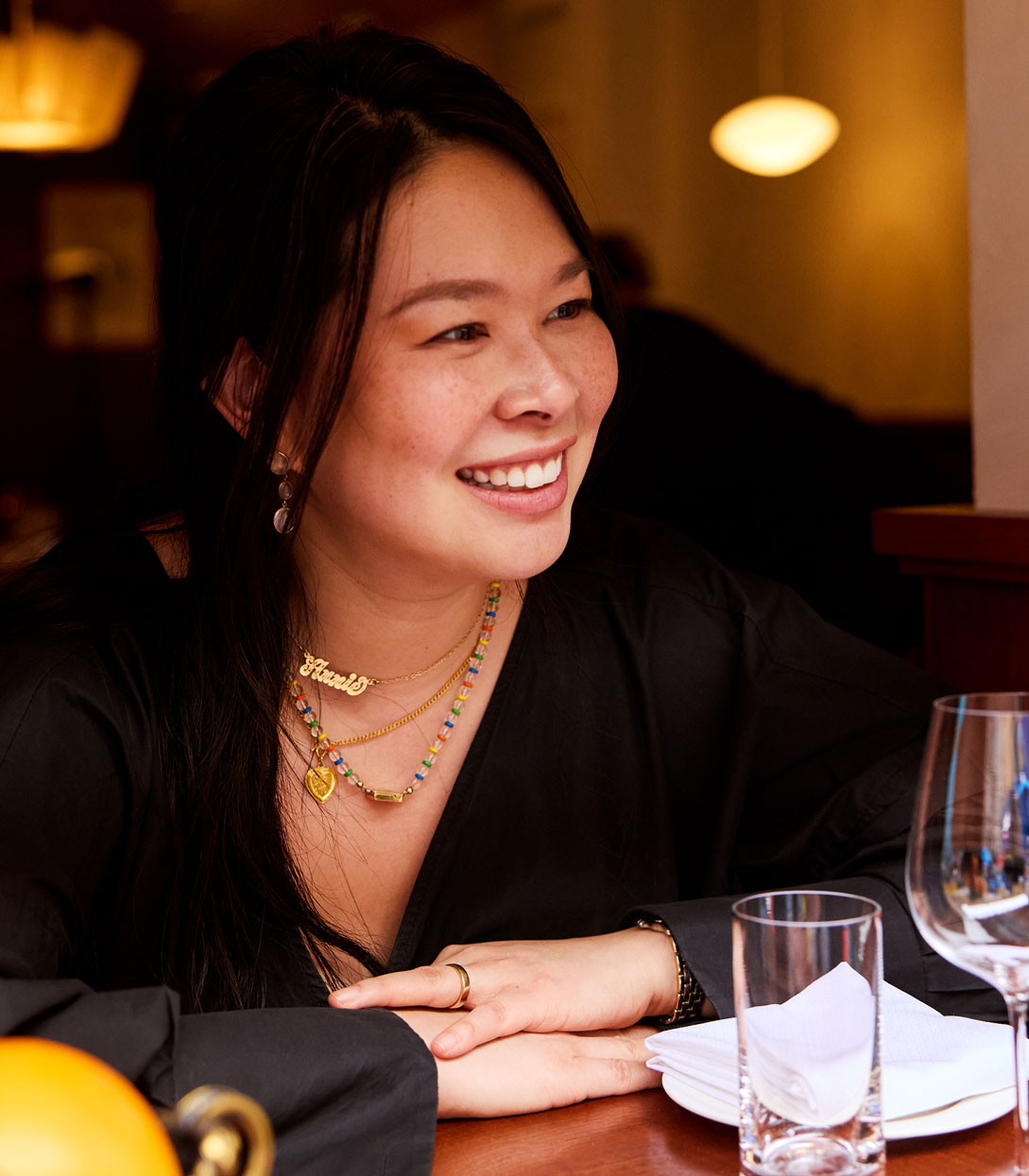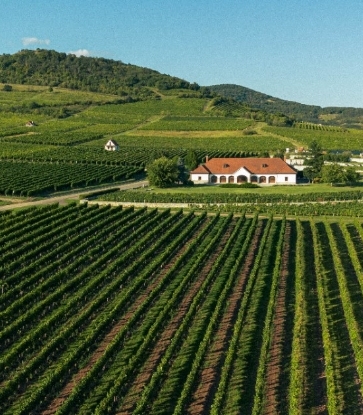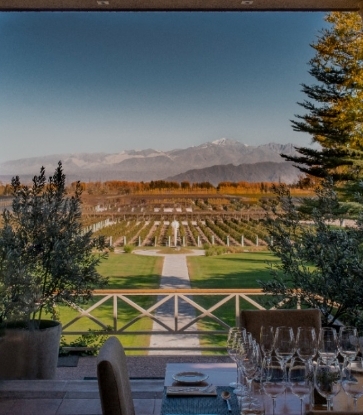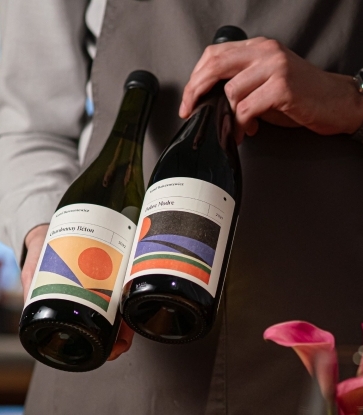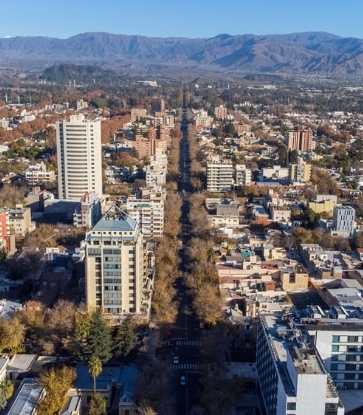The Gamble family has been farming land in Napa Valley since 1916. Third-generation Tom Gamble was the first in the family to plant vineyards and grow grapes; today he has estate vineyards in Oakville, Mt. Veeder, Rutherford and Yountville. In 2005, after growing and selling his own grapes for two decades, Tom founded Gamble Family Vineyards, finally ready to bottle his own wines.
Originally from England, Jim Close moved to California in 2000 to learn more about winemaking. He met Tom in 2003 and crafted the first vintage of Gamble in 2005—he’s made the wines ever since. I visited the winery in Oakville to speak with Jim about his career, the changes he’s seen in Napa over the last decade and what terroir really means.
How did you become interested in wine?
I grew up south of London so making wine in the Napa Valley was not necessarily an obvious career path. Growing up as a family we would take the ferry to France and load up the car with wine. Enjoying everyday wines with meals was the norm.
While at Edinburgh University studying psychology, I started working in a wine shop and developed a keener interest in and knowledge of the wines of the world. I quickly realized that psychology wasn’t what I wanted to do for a career. The wine seed was sown, and I decided to study Enology and Viticulture at the University of Brighton’s Plumpton College. My intention was to return to wine sales.
During my time at Plumpton, I worked a harvest in Southern France and then came to California in 2000. I originally came to work for three months as a harvest intern and happily got stuck. There was no going back—I had fallen in love with the science and art of making wine.

You’ve been at Gamble since the very beginning. Why has this been such a good fit for you?
Tom Gamble and I have worked together over a decade—2018 will be my 16th harvest with him. Helping to build a brand, a family of wines and a winery from the ground up has been very rewarding. We like each other, but we really do have a similar palate. We share a goal and direction of where we want the wines to go and what we want them to be. We want to make balanced wines. We don’t like the higher alcohol, high-octane wines. Other people do that well and make great wines but that’s not our house style. If our wines are on the table with a bunch of others, we don’t need to be the loudest wine in the room or the showiest. We’re happy to dial it back a bit and hopefully people will enjoy those nuances and subtleties, and the wines will complement the food they might be eating. Having this shared vision with Tom has made this journey very rewarding and has kept me happily focused at Gamble for many years. I’m given the free range to make great wines from great fruit that I love—why would I want to be anywhere else?
What makes a great wine?
A great wine is thought provoking and layered with depth and intrigue. It makes you think and scratch your head, it wows you, it leaves you with a lasting memory and creates new memories. I remember first tasting Savennières from the Loire Valley. Those Chenin Blanc wines are complex, nutty, slightly oxidized, with a certain funk, interest, depth, purity and minerality. I thought, wow, you don’t have to be linear, you can have all this good stuff going on. Pure and clean doesn’t have to be the only way. You can have these interesting complexities which maybe in California we might even whisper is a fault. A great wine has beauty and personality, it’s visceral, thought provoking and leaves you with a lasting memory of the place, the time, the experience and that part of your life.

What have you seen change in the 15 years you’ve worked as a winemaker in Napa?
The wines of the valley have always been varied—that’s what keeps it interesting for the consumer. But trends do exist. At this point it’s nice to see the pendulum swing back toward slightly more subtle, nuanced wines. The biggest, although impressive, is not always best. Having said that, there is room for all. Wine appreciation is very subjective. It would be boring if we all liked the same thing.
What’s your stance on sustainable, organic or biodynamic farming?
We respect the principles of organic farming. But while organic certification is an all or nothing proposition, we believe in farming responsibly and adopting ideas from the organic world, having fish-friendly and green certification, while retaining the best that sensitive conventional farming can offer has considerable merit. Using a mix of organic and carefully selected conventional products can reduce the impact on the land by reducing the number of applications required during a growing season. Tom’s family has been farming Napa Valley since 1916 and takes land stewardship very seriously with the goal of protecting the land for this generation and the next. Tom’s mother, Mary Ann McGuire, was dedicated to and successful in helping secure passage of the Napa Valley Agriculture Preserve, protecting Napa’s agricultural landscape from urban creep.
What are your views on climate change?
We all need to take the changes brought about by a warming world very seriously. While a lot of the world’s problems seem very far away, this is an issue that needs both global and local responses. We can all choose to make small changes in the way we live.
As far as climate change relates to grape growing and winemaking, only time will tell us the whole story. But it is not farfetched to think that as generations replant vineyards, they will have to consider the new climatic norms. Choosing the right varietal, clone and rootstock will become even more important.
When planting, growers often consider the productive life of a vineyard to be 20 to 30 years, so how will the climate have changed in that time? A warmer planet would suggest grapes will accumulate sugar quicker, so maybe we need to promote strategies for delaying ripening. We can do that by many means, for example by growing more vigorous competitive cover crops, by pruning later, by leaving a heavy crop load and by only thinning the crop around veraison. These are obviously not solutions to the larger problem but may prove to be successful strategies to mitigate effects close to home.
What advice would you give to a young person just starting out in wine, who wants to become a winemaker?
Never stop learning, and never lose your passion—even when you’ve been scrubbing tanks for hours on end!
Hero image by Alan Campbell Photography.






